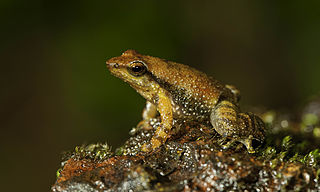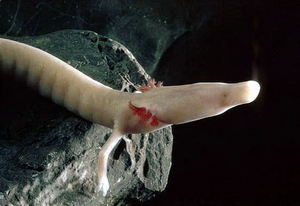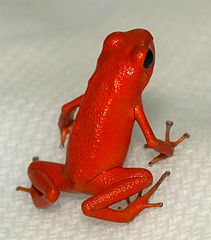In 2010, 33 teams of researchers set out across 21 countries to search for the hundreds of amphibian species that may have been driven to extinction in recent years. A “100 Most Wanted” and a “10 Ten” list was compiled, and the public’s help was sought. Now, 4 years later, we have both discouraging and promising news, with some lost species “resurrected”, several new ones described, and no sign at all of many.
I’ve written about the global amphibian decline, spurred by an emerging disease (Chytrid fungus outbreak), habitat loss, and other factors, in several articles (please see Further Reading, below). The current search for survivors is also covered in the recently-published book In Search of Lost Frogs. Today I’d like to summarize recent reports from the field. Most of the good and bad news centers on frogs…the status of many salamanders, which are less well-studied and harder to find, remains unknown.
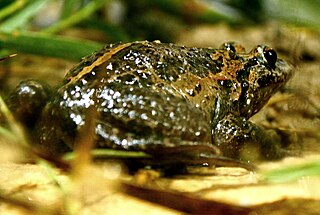
Uploaded to Wikipedia Commons by Mickey Samuni-Blank
Down But Not Out
To start off on a positive note, I was happy to learn that 6 frog species that had not been seen in over 20 years were found in a single week of searching on Haiti! Hopefully, surveys of other habitats that have been studied in recent years will turn out as well.
Several species on the “Most Wanted List”, all feared extinct, have also been found. Included among these are:
Ecuador’s Rio Pescado Stubfoot Toad, formerly known only from drawings.
The Borneo Rainbow Toad, which had not been seen in 87 years.
Israel’s Hula Painted Frog, which was pushed to near-extinction by marsh drainage and introduced fish.
Newly-Discovered Species
Happily, a number of species new to science turned up during the worldwide search, and in conjunction with related efforts. While many are tiny and are noted only by frog enthusiasts, several have, for various reasons, also aroused some public interest:
Named due to its (perceived!) resemblance to a character on The Simpsons TV show, the Monty Burns Toad had been hidden away in Columbia. Another surprise, a neon-orange Dart Poison Frog found in Panama, measures only 12.7 mm in length – the smallest among a huge array of tiny relatives.
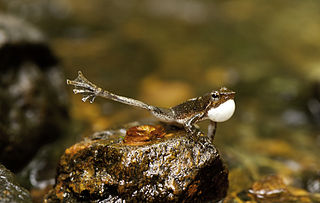
Uploaded to Wikipedia Commons by SathyabhamaDasBiju
My favorites are the 14 species of Dancing Frogs recently found in India’s forests. Because they live near rushing streams that would drown out mating calls, the tiny males have evolved an alternative way of attracting mates. True to their name, they whip their rear legs about in a variety of “dance-like” moves (please see photo).
Still Missing
Unfortunately, many species remain undetected. Some, such as the Mesopotamic Beaked Toad, have not been found despite extensive surveys. Others that are hopefully skilled at avoiding herpetologists rather than gone forever include:
Fantastically colored in greenish-yellow and jet black, the bromeliad-dwelling Jackson’s Climbing Salamander has not been observed in its native Guatemala since 1975.
Turkestanian Salamander: Known only from two specimens collected in Kyrgyzstan, Uzbekistan or Tajikistan, this salamander has not been seen since its discovery in 1909.
Golden Toad: This brilliantly colored Costa Rican native, despite inhabiting isolated, pristine cloud forests, has been missing since 1989.
Further Reading
Public Help Needed in Amphibian Search
 That Reptile Blog – Reptile, Amphibian and Exotic Pet Care and Information
That Reptile Blog – Reptile, Amphibian and Exotic Pet Care and Information

